In today's fast-paced digital world, ensuring our schools are equipped with the latest technology is more essential than ever. Upgrading our existing systems not only enhances the learning experience for students but also empowers teachers to utilize innovative teaching methods. Imagine a classroom where every student has access to cutting-edge tools that inspire creativity and critical thinking. Join me as we explore the possibilities of a technology upgrade and discover how it can transform our educational landscape.
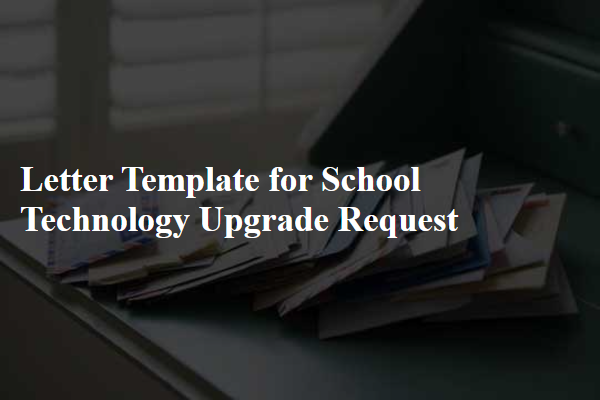
Clear Purpose and Objectives
A technology upgrade in schools is essential for enhancing the educational experience of students. Modern learning environments require reliable high-speed internet connections, state-of-the-art computers, and interactive smartboards to engage students effectively. Upgrading to Wi-Fi 6 can increase network capacity and reduce latency for students across 30 classrooms. Investing in 100 new laptops equipped with advanced software will ensure that every student has access to learning materials, particularly in underserved areas. Interactive technology, such as virtual reality headsets, can offer unique educational experiences, leading to improved outcomes in science and history classes. These updates aim to foster a dynamic learning atmosphere, preparing students for the technological demands of higher education and future careers.
Detailed Description of Current Challenges
Current school technology challenges include outdated computer systems, such as HP desktops from 2015, which struggle to run modern educational software effectively. Internet connectivity issues arise from low bandwidth limitations (10 Mbps) affecting over 300 students, leading to frequent disruptions during virtual learning sessions. Classroom projectors, particularly the Epson models older than five years, frequently malfunction, diminishing visual learning experiences while impacting engagement during lessons. In addition, classroom furniture, such as desks and chairs from 2010, lack ergonomic design, contributing to student discomfort during extended use of technology for learning and collaboration. These challenges impede both teachers' instructional effectiveness and students' educational experiences, highlighting the urgent need for an upgrade.
Proposed Technology Solutions
Proposed technology solutions for educational institutions, such as cloud-based learning platforms or interactive whiteboards, can significantly enhance the learning experience for students and teachers alike. For instance, implementing Google Classroom (Launched in 2014) can streamline assignments and provide easy access to resources for students. Furthermore, the adoption of 3D printers (available since the 1980s, with modern versions showcasing advanced capabilities) can foster creativity and innovation in subjects like engineering and art. Additionally, investing in robust Wi-Fi connectivity (ideally, 1 Gbps speeds recommended) can ensure that all students have equal access to online educational resources, fostering an inclusive learning environment. Finally, integrating virtual reality (VR) technologies, such as Oculus Quest 2, can offer immersive learning experiences in subjects such as history and science, allowing students to explore concepts firsthand.
Budget and Funding Considerations
A technology upgrade in educational institutions can significantly enhance student learning experiences. Budget allocations for technology, such as interactive smartboards (costing approximately $2,000 each), high-speed Internet connectivity (around $100 per month), and classroom tablets (priced at $300 each), can transform teaching methodologies. Funding considerations include potential grants from state education departments, which can provide up to 50% co-funding for specific programs aimed at digital literacy enhancement. Additionally, partnerships with local businesses may yield sponsorship opportunities, further alleviating financial constraints faced by the school. Engaging the parent-teacher association (PTA) for fundraising initiatives could also supplement the required budget, ensuring all students have access to state-of-the-art learning tools.
Expected Outcomes and Benefits
Incorporating advanced technology in educational environments, such as interactive smartboards and high-speed internet connectivity, can significantly enhance student engagement and learning outcomes. Research indicates that schools implementing such tools experience a 30% increase in student participation during lessons. Enhanced access to online resources enables differentiated learning, catering to various learning styles and needs. Additionally, upgraded technology infrastructure can streamline administrative processes, reducing paperwork by up to 50%, allowing educators to focus more on teaching rather than administrative tasks. Furthermore, providing students with essential skills in digital literacy prepares them for the increasingly technology-driven workforce, enhancing their career prospects. Overall, embracing technological upgrades fosters a more efficient, engaging, and modern educational experience at institutions like Highview Academy in New York.
Letter Template For School Technology Upgrade Request Samples
Letter template of request for technology enhancement in school curriculum
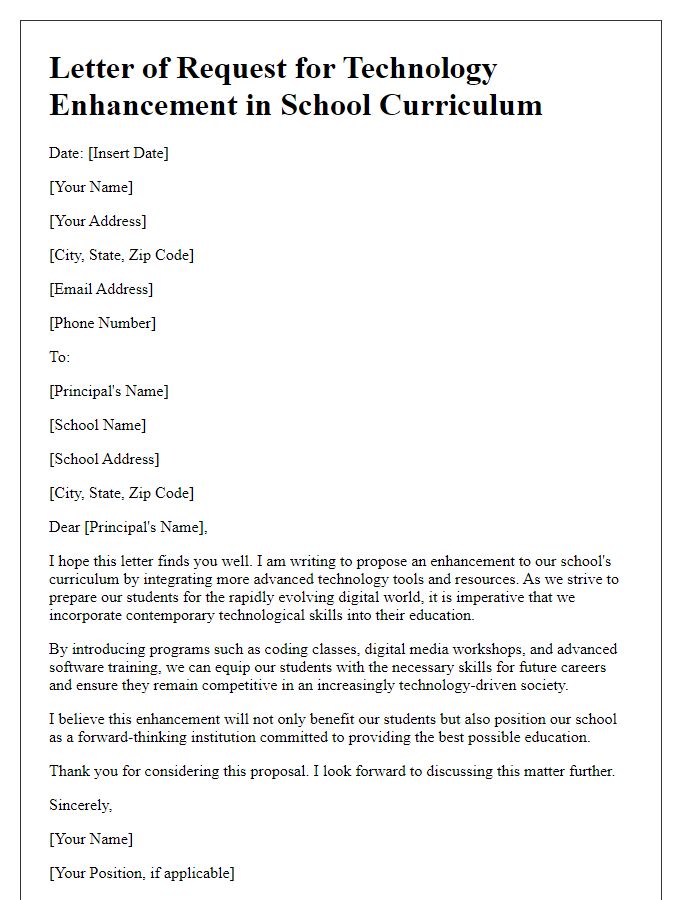

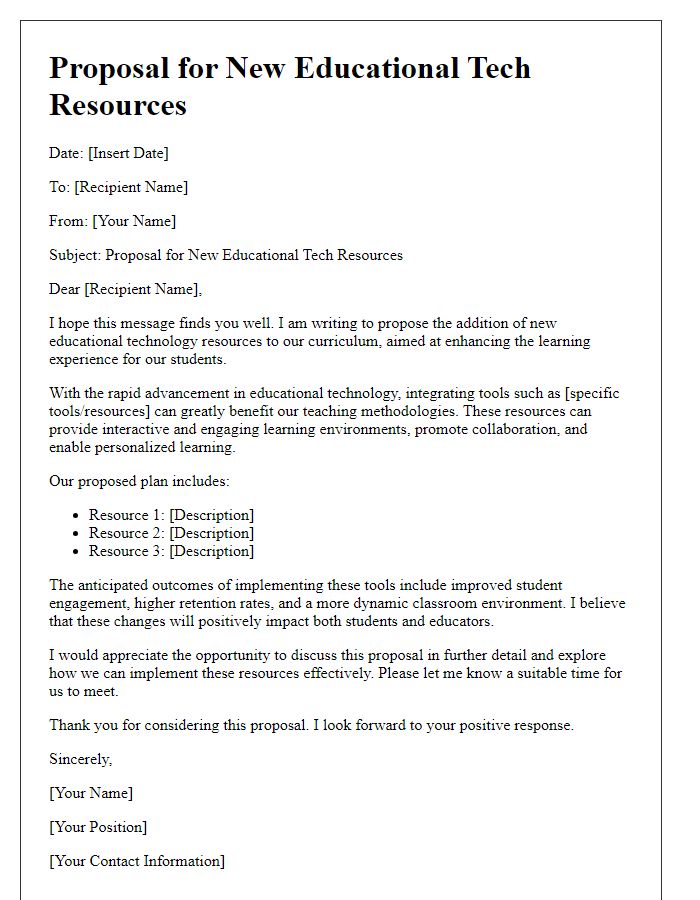
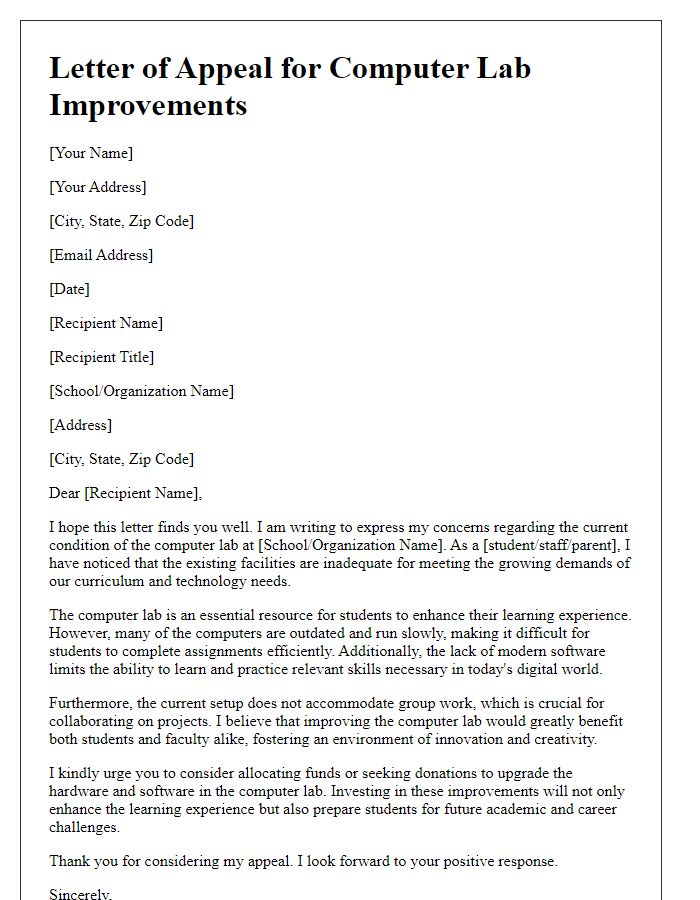
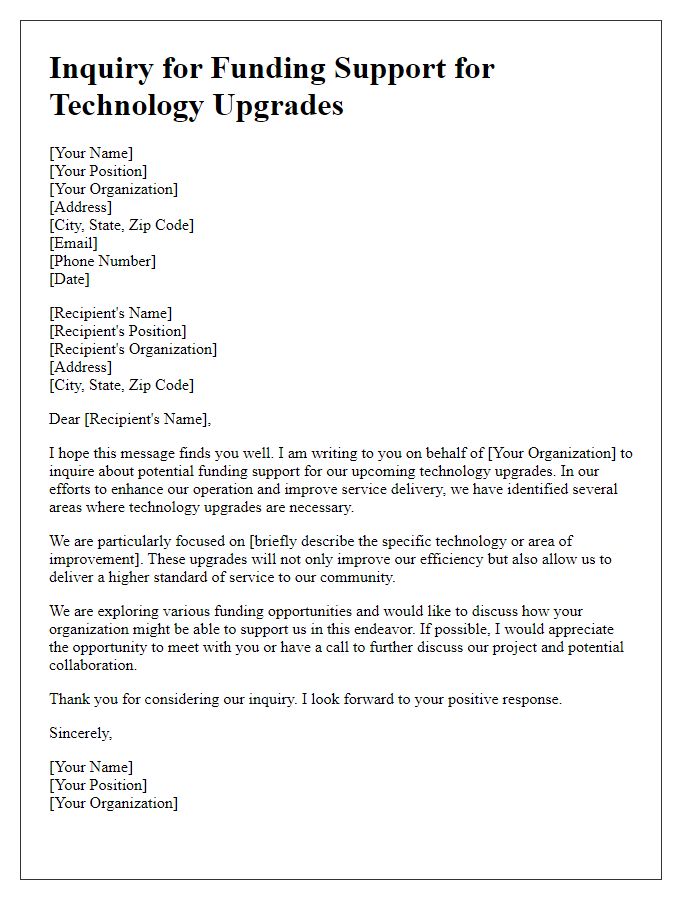
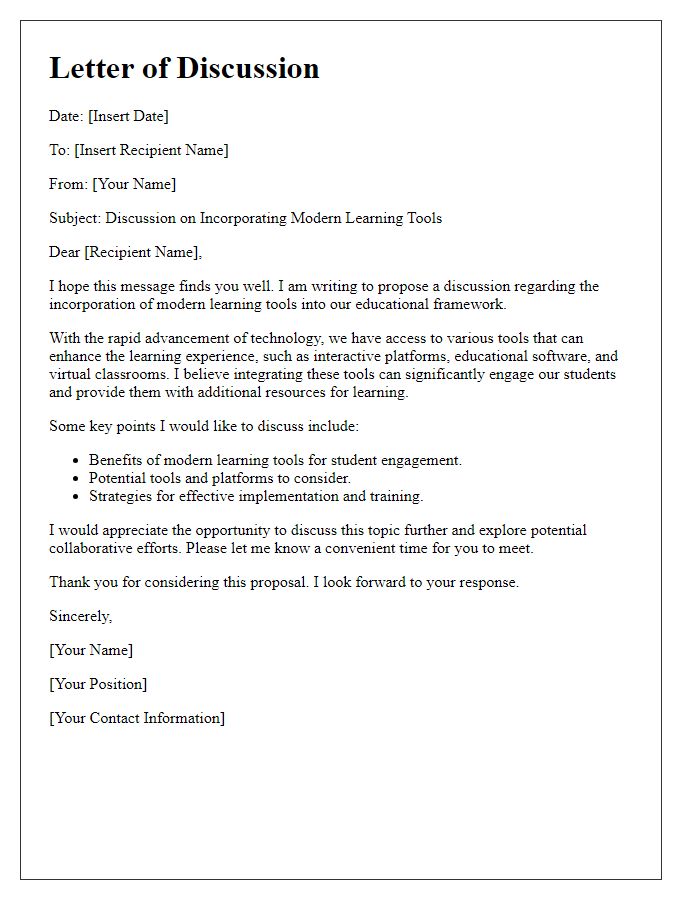
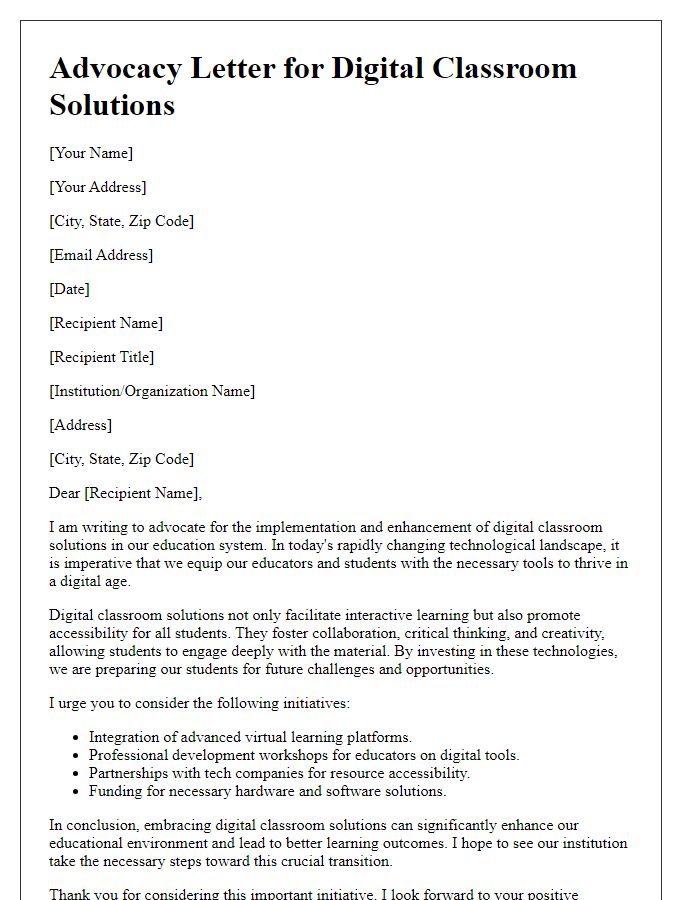
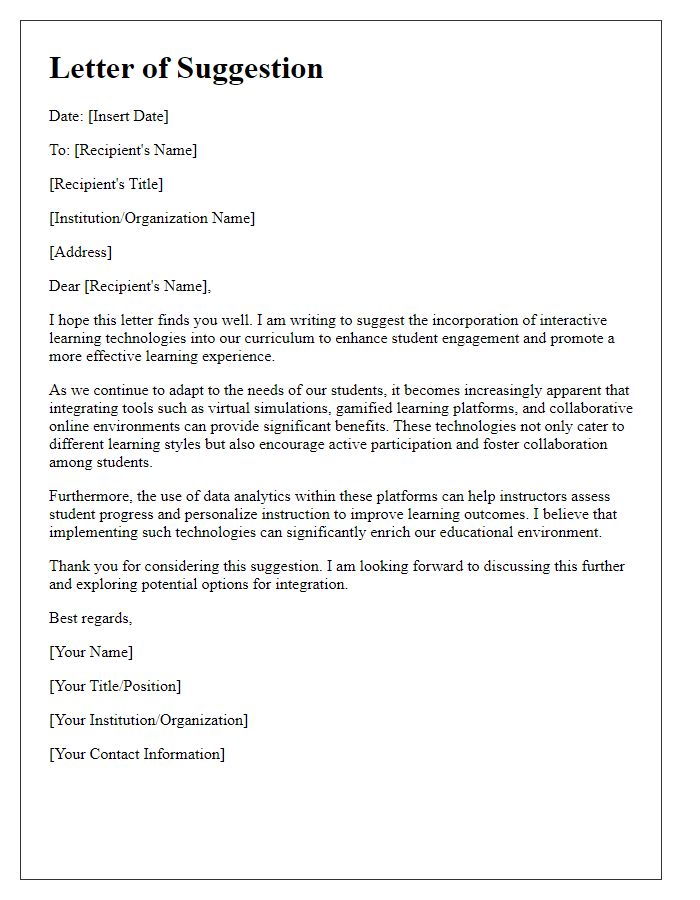
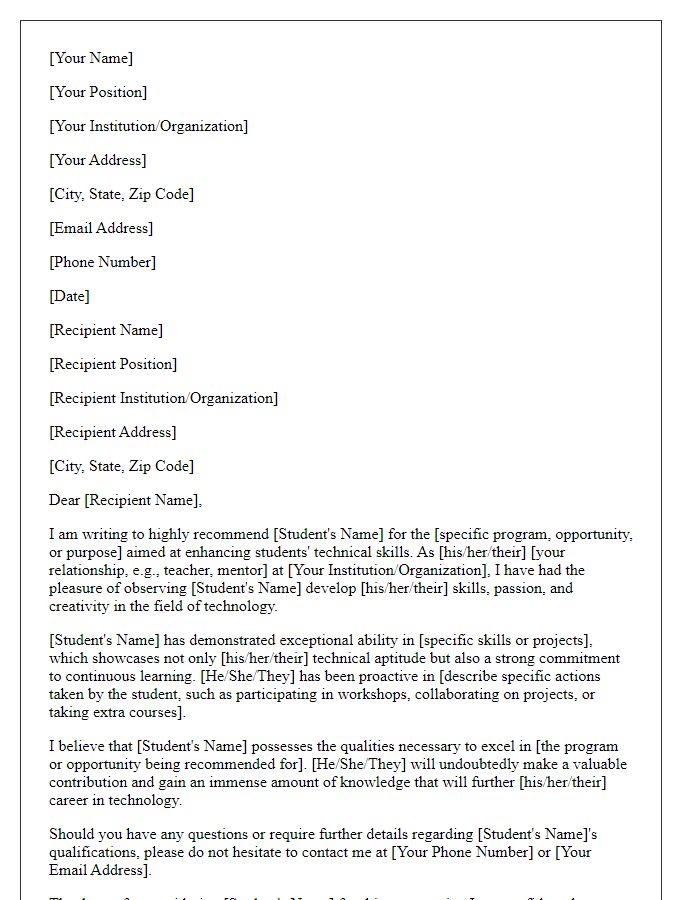
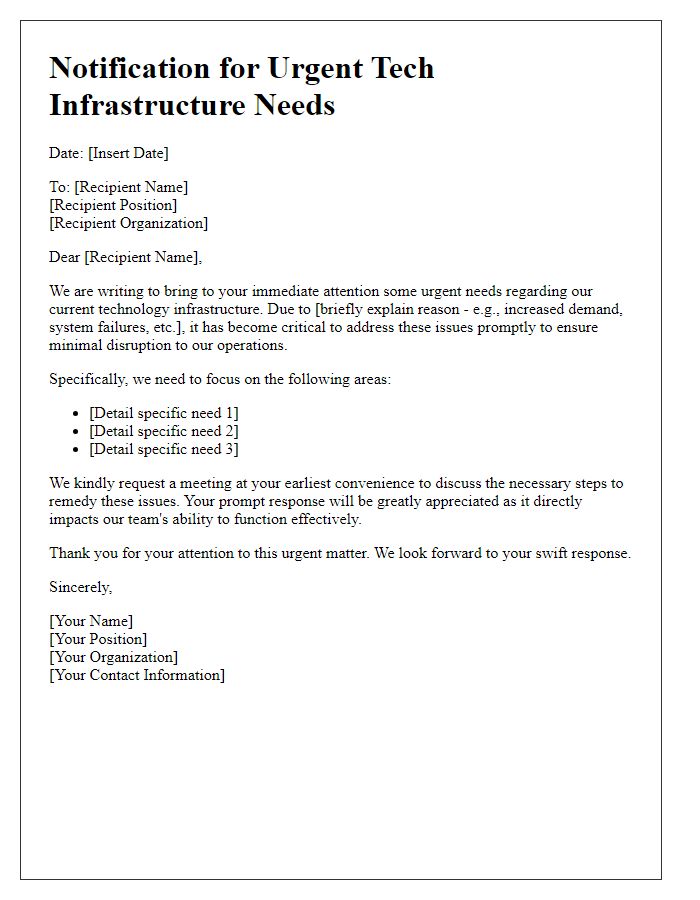
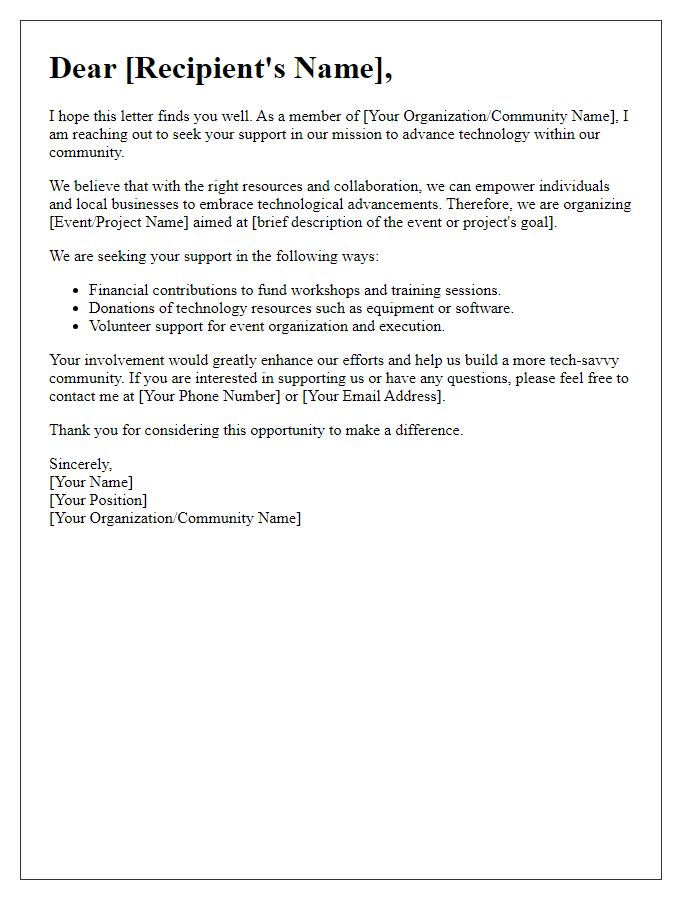


Comments